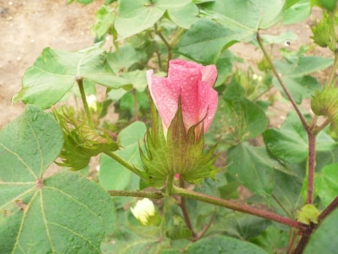10/05/2019 – Water consumption — auf Deutsch lesen
Cotton is no thirsty plant
There are many reports on the water consumption of cotton that have been in circulation for years but are desperately in need of an update, such as those which say that cotton counts as a thirsty plant.
Or even that it takes between 10,000 and 17,000 litres of water to produce one kilogram of the natural fibre.
This is not true. The truth is: Cotton is a so-called xerophyte, a plant that is able to grow especially in dry climates. But, just like any other living thing, cotton needs water at certain times in its growth cycle. In particular, to produce good yields.
Recent global research by the scientific department of the Washington-based International Cotton Advisory Committee (ICAC) shows that producing one kilogram of ginned cotton requires on average only 1,214 litres of artificial irrigation water worldwide. 41.3 percent of the total volume of cotton production does not require artificial irrigation. This relates to the 55 percent of the global cotton growing area which is irrigated exclusively by rain.
The 2011 study by M. M. Mekonnen and A. Y. Hoekstra, “The Green, Blue and Grey Water Footprint of Crops and Derived Crop Products” from the Twente Water Centre at the University of Twente in Enschede in the Netherlands shows that compared to other crops, cotton consumes only three percent of the water used in agriculture for artificial irrigation. Wheat, on the other hand, requires 15 percent, rice 13 percent and corn 10 percent.
Effective measures
In recent years, cotton producers in many countries have used modern irrigation systems, which has led to a huge increase in the efficiency of water use. Thus, it is now possible to produce significantly more cotton using less water. In addition, cotton research is working to further improve the properties of cotton in terms of its high drought tolerance.
Countries such as the USA have set themselves the goal of reducing water use in growing cotton by 18 percent within 10 years. The necessary technical developments include, among other things, state of the art, computer-controlled sensor technology. Significant progress has also been made in cotton-producing countries such as Australia and Israel.
Excerpt from Bremen Cotton Report No. 11/12 – March 2019.
For more information www.baumwollboerse.de/en




